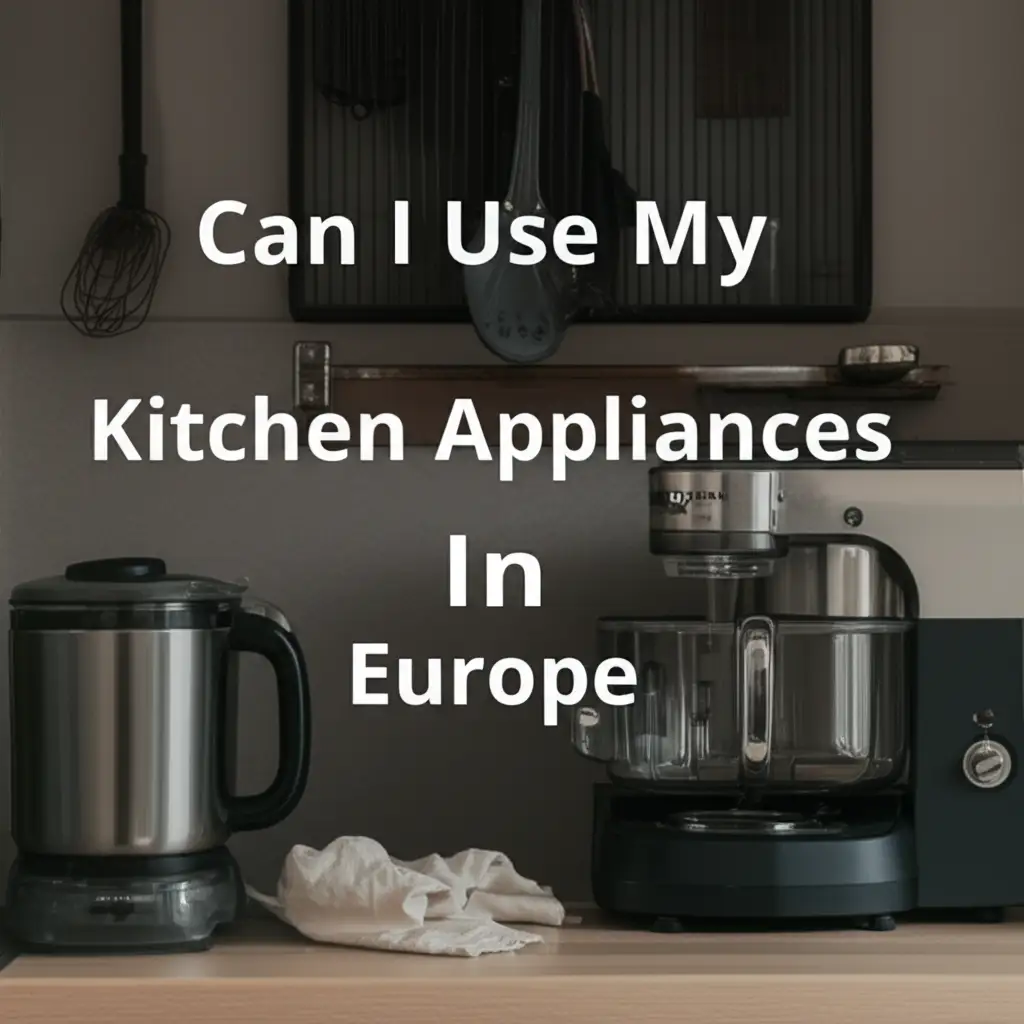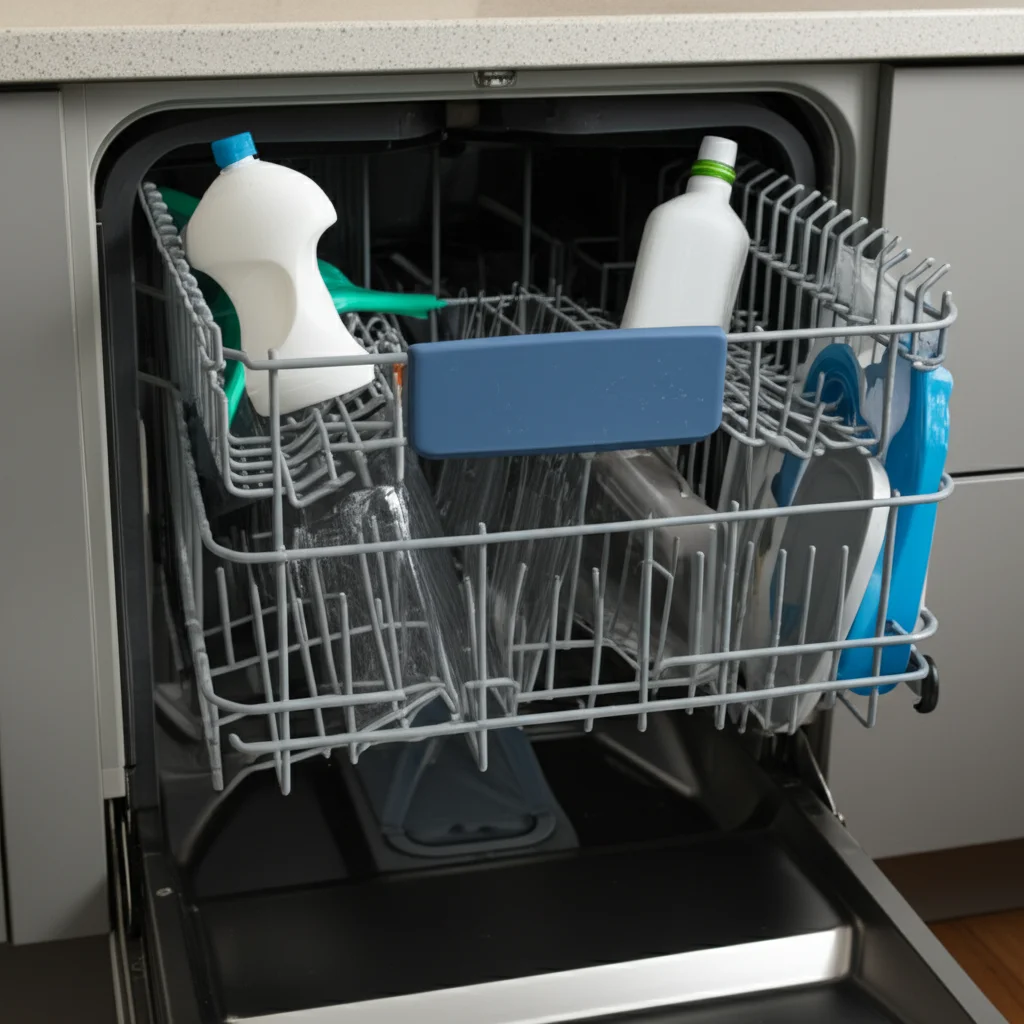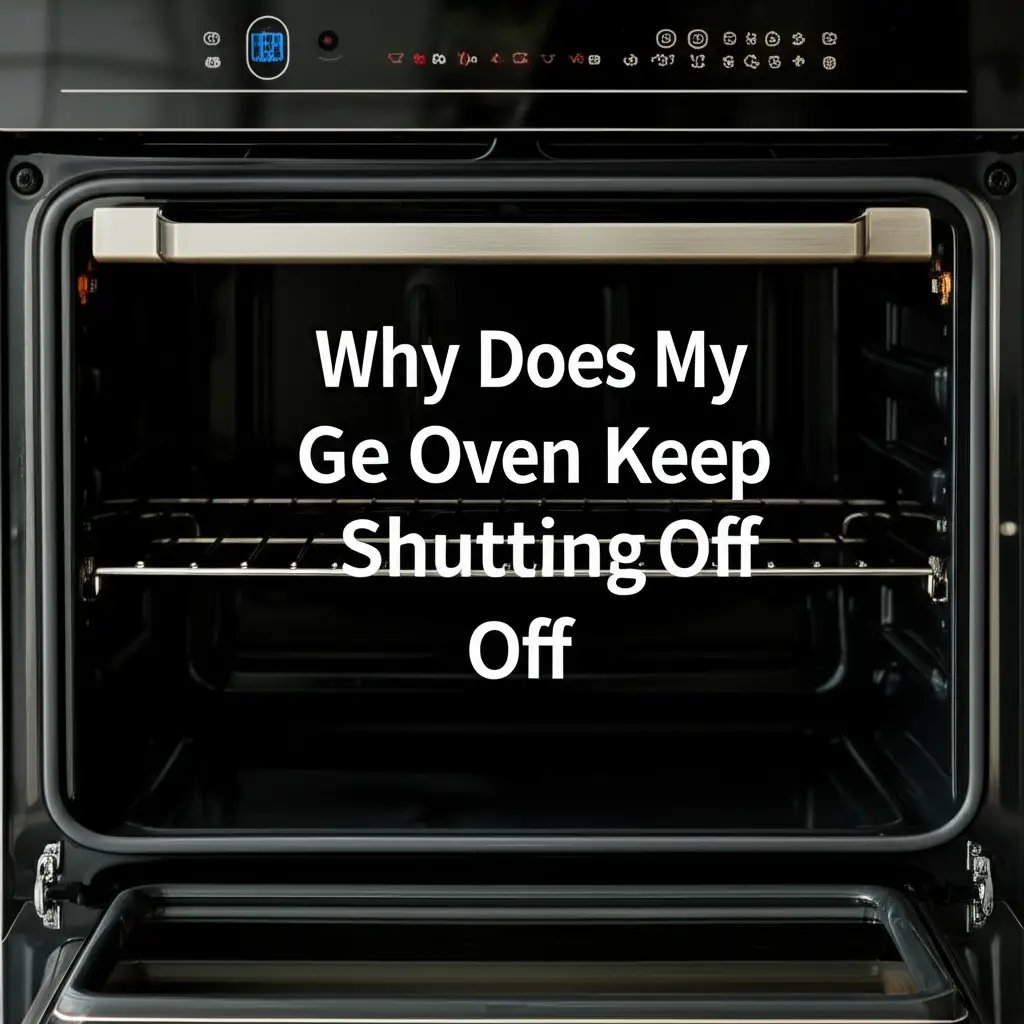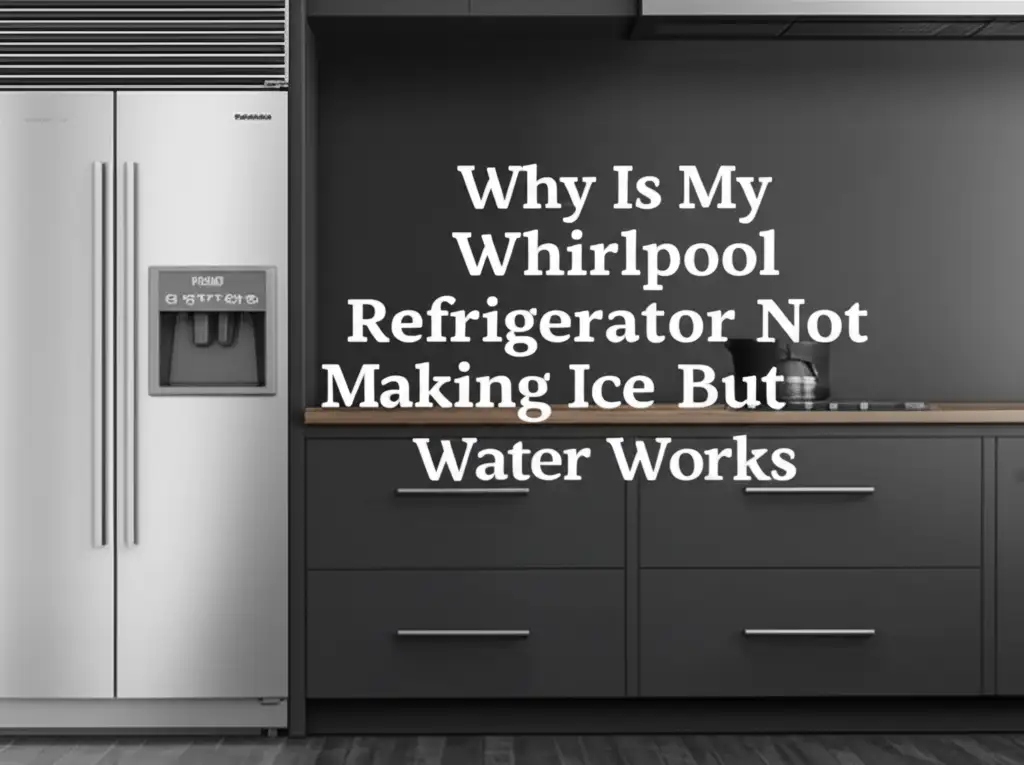· Katria Melrose · Home Appliances · 13 min read
Can I Use My Kitchen Appliances In Europe

Using Your Kitchen Appliances in Europe: What You Need to Know
Moving to Europe or planning an extended stay? One big question often pops up: “Can I use my kitchen appliances in Europe?” It is an important question. You probably rely on your trusty blender, coffee maker, or toaster every day. Taking them with you seems logical.
However, electrical systems differ widely across the globe. What works perfectly in your home country might not work in Europe. This article will help you understand the differences. We will cover voltage, frequency, and plug types. You will learn what appliances you can bring and what you should leave behind. We will also explore the necessary tools and safety measures.
Takeaway
- Check Voltage and Frequency: US appliances typically use 120V/60Hz; Europe uses 220-240V/50Hz.
- Plug Adapters vs. Converters: Adapters change plug shape; converters change voltage.
- Dual-Voltage is Best: Appliances marked 100-240V are safest to use with just an adapter.
- Avoid High-Wattage Items: Hair dryers, toasters, and kettles often cause issues.
- Safety First: Always follow instructions and unplug when not in use.
You can use some kitchen appliances in Europe, but not all. The main factors are voltage, frequency, and plug type. Small, dual-voltage appliances are often safe with a simple adapter. High-power items usually require a heavy-duty converter or are best left at home.
Understanding Voltage and Frequency Differences
When you ask, “Can I use my kitchen appliances in Europe?” the first thing to check is the power supply. Electrical systems are not the same worldwide. My kitchen appliances here in the United States operate on a specific power standard. Europe uses a different standard.
Most homes in the United States operate on 120 volts (V) and 60 hertz (Hz). This is the standard for almost all household electronics. Your toaster, coffee machine, and stand mixer are built for these specifications. They expect this amount of power to function correctly.
European countries, on the other hand, use a higher voltage. Their standard is typically 220-240 volts. The frequency is also different, usually 50 hertz. This difference is critical for your appliances. If you plug a 120V appliance into a 240V outlet, it will likely overheat. It can burn out the motor or even cause a fire.
The frequency difference (60Hz versus 50Hz) also matters. Some simple appliances, like heaters or light bulbs, might tolerate a frequency change. However, appliances with motors or precise timing, like electric clocks or blenders, can run too fast or too slow. This can damage the appliance over time. Always check the label on your appliance. It will list the required voltage and frequency. Look for “Input” or “V” and “Hz” specifications.
Power Plugs and Adapters: Your First Line of Defense
Once you understand voltage, the next step is the physical plug. European outlets look very different from American ones. My US kitchen appliances use a flat, two-prong or three-prong plug. These plugs simply will not fit into a European wall socket.
This is where a simple plug adapter comes in handy. A plug adapter does not change the voltage. It only changes the shape of the prongs. This allows your appliance’s plug to fit into the European outlet. Think of it as a mechanical solution, not an electrical one.
There are many types of European plugs. The most common type is Type C, which has two round pins. Type F (Schuko) and Type E are also common, often with a third grounding pin or clip. You will need to buy a specific adapter for the countries you visit. A universal adapter kit is often the best choice for travelers. It includes various plug shapes.
Remember, an adapter is only safe if your appliance is “dual voltage.” A dual-voltage appliance can handle both 120V and 220-240V. Many modern electronics, such as phone chargers or laptop power bricks, are designed this way. They will show an input range like “100-240V, 50/60Hz” on their label. If your appliance is dual voltage, a plug adapter is all you need. You can then use it without worry.
Voltage Converters vs. Transformers: Choosing the Right Tool
If your kitchen appliance is not dual-voltage, a simple plug adapter is not enough. You need something that changes the voltage. This is where voltage converters and transformers come into play. People often use these terms interchangeably, but they are different. Knowing the difference is important for safety and appliance longevity.
Voltage converters are typically smaller and lighter. They convert the voltage for short periods, often for travel appliances like hair dryers. Many converters use a semiconductor circuit. They are designed for resistive loads, meaning items that produce heat. Examples include curling irons or small travel kettles. Converters are generally not suitable for long-term use or for appliances with motors. Using a converter with a motor-driven appliance like a blender can damage the motor. It can also harm the converter itself.
Transformers, on the other hand, are heavier and more robust. They use coils of wire to step voltage up or down. They provide a stable voltage change for continuous use. Transformers are much better for motor-driven appliances, like blenders, food processors, or stand mixers. They can handle “inductive loads.” However, transformers are expensive and quite heavy. A large kitchen appliance might need a very powerful transformer. This can make transporting both the appliance and the transformer impractical.
Always check the wattage of your appliance before buying a converter or transformer. The wattage of the converter or transformer must exceed your appliance’s wattage. For example, if your blender is 500 watts, you need a converter or transformer rated for at least 600-750 watts. It is always wise to have a safety margin. Overloading a converter or transformer can cause it to overheat. This can create a fire hazard. Prioritize safety above all else.
Which Appliances Are Safest to Use? (Dual-Voltage Items)
When planning to use your kitchen appliances in Europe, dual-voltage items are your best friends. These appliances are designed to operate safely on a wide range of voltages. They work on both the American 120V and European 220-240V systems. You can identify them by checking their labels. Look for “Input: 100-240V, 50/60Hz” or similar wording.
Many small electronic devices and some travel-specific kitchen gadgets fall into this category. For instance, your smartphone charger is almost certainly dual-voltage. Laptop power bricks are also typically universal. Small travel kettles or immersion heaters sometimes offer dual voltage settings. You can often switch them manually.
Bringing a dual-voltage item means you only need a simple plug adapter. This saves you money on expensive converters. It also removes the risk of damaging your appliance or the electrical system. Consider things like electric toothbrushes, some travel-sized blenders for smoothies, or small coffee grinders. These might be good candidates.
However, even with dual-voltage items, always double-check the label. Never assume. A quick glance at the input specifications ensures peace of mind. Using items that are truly dual-voltage makes your transition to a European electrical system much simpler. It reduces the chance of unpleasant surprises. This simple check helps keep your devices safe.
Appliances to Avoid Bringing: High-Power Considerations
While some appliances can cross continents easily, many kitchen appliances are best left at home. These are usually high-wattage items. They draw a lot of power. Common examples include toasters, electric kettles, coffee makers, and hair dryers. My toaster oven, for instance, uses a lot of electricity. Even if you found a robust voltage converter, these items pose challenges.
High-wattage appliances require very powerful and expensive transformers. A typical kitchen toaster might draw 800-1500 watts. A coffee maker can be 1000-1500 watts. An electric kettle can easily reach 1500-2000 watts. A transformer capable of handling such high wattage would be large. It would also be very heavy. It might weigh more than the appliance itself. This makes it impractical for most travelers or people moving.
Using a small, inadequate converter with a high-wattage appliance is dangerous. The converter will overheat. It can burn out. It can even start a fire. It is a significant safety risk. The appliance itself could also be damaged. The motor could fail. The heating element could burn out.
Furthermore, even if you found a suitable transformer, the frequency difference can still impact some appliances. Motors in blenders or stand mixers might run differently. This can reduce their lifespan. My advice is to leave these heavy-duty items behind. It is safer and more cost-effective. You can buy new ones in Europe. They are readily available and designed for the local power system.
The Cost-Benefit Analysis: Buy New or Adapt Old?
Deciding whether to bring your kitchen appliances to Europe or buy new ones is a big decision. It comes down to a cost-benefit analysis. My first thought is often to just bring everything. But the reality is more complicated. Shipping large appliances is expensive. It also involves customs. Adapting them can be costly and risky.
Consider the cost of a high-quality voltage transformer. As I mentioned, a robust transformer for a high-wattage appliance can cost hundreds of dollars. Add that to the shipping cost if you are moving. Then factor in the risk of damage during transit or electrical issues once there. Sometimes, the total expense approaches or even exceeds the cost of a new appliance.
For appliances like coffee makers, toasters, or electric kettles, buying new in Europe is often the best choice. These items are generally affordable. They are designed for European voltage and plugs. They come with local warranties. You avoid the hassle of converters and adapters. You also eliminate safety concerns related to mismatched power. Many European kitchens have smaller appliances anyway.
However, some specialty or sentimental appliances might be worth the effort. For example, if you have a very expensive stand mixer or a unique vintage blender, you might want to bring it. In such cases, carefully research a high-quality, reputable transformer. Ensure it matches the appliance’s wattage. Weigh its cost and weight against the cost of replacing the item. Sometimes, the emotional value or specific features make adapting worthwhile. For general kitchen needs, buying new often makes more sense.
Safety Precautions and Best Practices for Appliance Use
When you decide to use your kitchen appliances in Europe, safety must be your top priority. My experience has taught me that overlooking small details can lead to big problems. Electrical safety is no joke. Always begin by checking the appliance’s label. Confirm its voltage and frequency requirements. This is your first and most important step.
If your appliance is dual-voltage, a simple plug adapter is usually fine. Just plug it in. But if you need a voltage converter or transformer, choose the right one. Ensure its wattage rating is higher than your appliance’s wattage. I always give myself at least a 20-25% buffer. This prevents overheating. A small error can have serious consequences.
Never overload power strips or wall outlets. Using multiple high-wattage appliances on one circuit can trip breakers. It can also create fire hazards. If you are using a transformer, plug only one high-wattage appliance into it at a time. Do not daisy-chain extension cords. This is a common mistake that can lead to problems.
Always unplug appliances when not in use. This prevents accidental activation. It also protects against power surges. If you notice any unusual smells, sounds, or sparks, immediately unplug the device. Stop using it at once. These are signs of a problem. It is better to replace an appliance than to risk a fire. Proper use and regular checks ensure safety for you and your home. Maintaining your appliances also helps. If you notice signs of wear, like frayed cords or loose plugs, get them repaired. If you have large appliances that need storing, perhaps you are going away for a long time, consider how to store kitchen appliances in a small kitchen to protect them. Proper storage helps keep your home tidy and safe. Also, keeping your new European appliances clean will extend their life. For example, knowing how to clean stainless steel appliances will help them look good and last longer. Similarly, if you choose black appliances, understanding how to clean black appliances is useful.
FAQs About Using Kitchen Appliances in Europe
Can I use my US coffee maker in Europe with an adapter?
No, usually you cannot. Most US coffee makers are 120V and high wattage. A simple plug adapter only changes the plug shape, not the voltage. Plugging a 120V coffee maker into a 220-240V European outlet will damage it. It may also create a fire hazard. You would need a heavy-duty, high-wattage voltage transformer, which is expensive and bulky.
Are universal travel adapters safe for all appliances?
Universal travel adapters are safe for dual-voltage appliances. They only change the physical plug type. They do not convert voltage. For non-dual-voltage appliances, you need a voltage converter or transformer in addition to the adapter. Always verify your appliance’s voltage requirements before use.
Will my blender work slower or faster on 50Hz in Europe?
Appliances with motors, like blenders, are sensitive to frequency. A US blender designed for 60Hz might run slower on Europe’s 50Hz system. This can affect its performance. It may also put stress on the motor. Over time, it can reduce the appliance’s lifespan. Some blenders may not work at all.
Is it cheaper to buy new appliances in Europe or use converters?
For most common kitchen appliances like toasters, kettles, and coffee makers, buying new in Europe is often cheaper and safer. High-wattage voltage transformers are expensive and heavy. The cost of a transformer often exceeds the price of a new basic appliance. New appliances bought in Europe come with local warranties and are designed for the local power system.
Can I bring my KitchenAid stand mixer to Europe?
Bringing a KitchenAid stand mixer requires careful consideration. It is a high-wattage, motor-driven appliance. You would need a very large and expensive step-down transformer. This transformer would be heavy and cumbersome. While technically possible, it is often impractical. It may be more cost-effective to buy a new one or rent one in Europe.
What about small USB-powered kitchen gadgets?
Small USB-powered gadgets are generally safe. Their chargers are almost always dual-voltage (100-240V, 50/60Hz). You only need a simple plug adapter for their charging brick. The USB cable then connects to the device. This includes items like portable blenders, milk frothers, or handheld whisks that charge via USB. Always check the charger’s label to be certain.
Conclusion
The question “Can I use my kitchen appliances in Europe?” does not have a simple yes or no answer. It depends heavily on the specific appliance. It also depends on understanding electrical systems. My main takeaway for you is this: always check the labels. Dual-voltage items are your best bet. They only need a simple plug adapter. High-wattage, non-dual-voltage items are usually more trouble than they are worth.
While voltage converters and transformers exist, they come with costs and risks. For many common kitchen appliances, buying new in Europe is the most practical and safest choice. You get appliances designed for the local power. You also avoid safety hazards. My advice is to simplify your move or travel. Only bring items you know are safe to use or truly cannot replace.
Planning helps prevent blown fuses or damaged appliances. Take the time to assess your needs before you pack. Your kitchen essentials can make your new home or trip more comfortable. Make sure they are powered correctly. Make smart choices about what to bring and what to buy there. This will ensure your appliances work safely and reliably. Enjoy your European kitchen adventures!
- travel appliances
- Europe voltage
- power converter
- electrical adapters
- international travel
- kitchen essentials
- home appliances
- relocating to Europe





